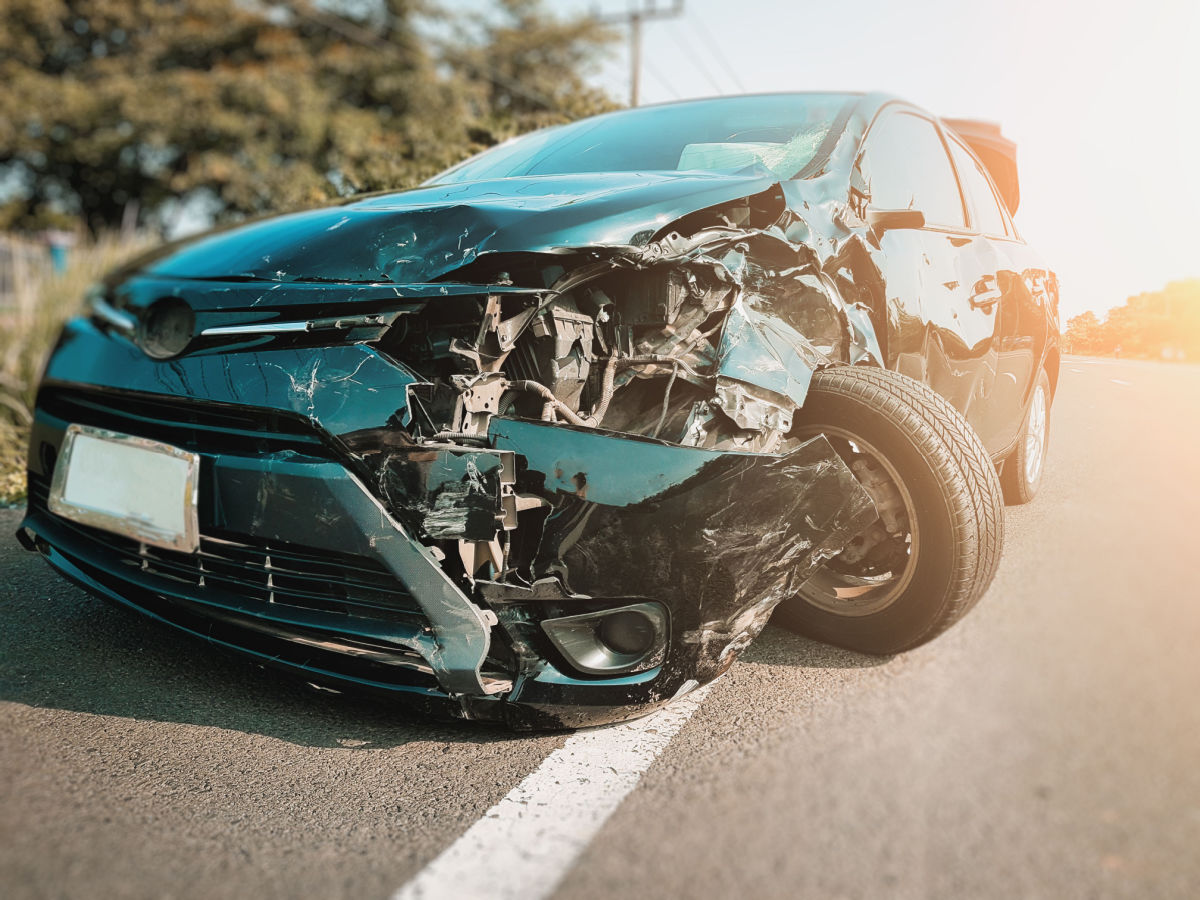There are millions of accidents on roads and highways in the United States each year. Unfortunately, you may be one of the victims of a recent accident. Aside from possible injuries, you must consider your car’s condition.
Did you know the average collision deductible is $500? When an accident victim files a claim, this amount will usually be less than the cost of repairs for a totaled vehicle. Knowing some characteristics of a car totaled after an accident helps you stay prepared. What does it mean when a vehicle is a total loss? And what are the signs that make a car totaled after an accident?
What Does “Totaled” Mean?
If your car has been involved in an accident and is totaled (also called a “total loss”), it means either your car isn’t repairable, or the cost of repairs is higher than what it’s worth.
After an accident, your insurance company will typically complete an inspection of the vehicle’s damage. When assessing the damage to your vehicle, insurers usually factor in the condition and structure of your car. During this process, the insurance companies determine whether your car is a total loss.
Instead of repairing your car, your auto insurance company will decide to send you a payment for your vehicle’s cash value. They send you an official document called a salvaged title. You can use the cash payment for the purchase of a replacement vehicle.
What Are Signs My Car Is Totaled?
Knowing some signs of a total loss vehicle can help you negotiate better with your insurance company. For example, your insurer may determine your car totaled after an accident if:
- It’s more than five years old and has extensive frame damage.
- You cannot drive the vehicle because of bent parts or leaky fluids.
- It is very old or has high mileage.
You should file a claim immediately after your car insurance company totals your car. This will begin the process of resolving the matter and getting you back on the road.
How Does Insurance Cover My Totaled Vehicle?
If someone else is responsible for the accident, their insurance company pays you the cash value of your car. The other driver’s liability coverage pays the vehicle’s actual value. This money is what your car is worth and can help you purchase a new vehicle.
If your vehicle was damaged in any way or an uninsured driver hit you, the following coverages on your insurance policy can provide protection. Learning about these can help you decide which type of coverage is best for you.
Comprehensive
Comprehensive auto insurance coverage protects your vehicle from incidents beyond your control. Storm and fire damage, an accident with an animal, and vandalism are some of the types of incidents included under comprehensive coverage.
Additionally, if you’re the victim of car theft, comprehensive coverage can pay you for your vehicle’s value minus the deductible. This coverage includes a situation where police recover your vehicle, but it’s too badly damaged to repair.
Collision
Suppose you have an accident with an object, such as a vehicle, tree, guardrail, or another object. In that case, collision coverage pays for the damaged vehicle’s value minus the deductible. However, collision coverage doesn’t consider whose fault the accident was.
Uninsured Motorist Property Damage (UMPD) and Underinsured Motorist Property Damage (UIMPD)
UMPD and UIMPD come into play when a driver without insurance or insufficient insurance is deemed at fault in an accident with your vehicle. It may benefit you if you lack collision coverage and can cover your vehicle up to a specified dollar amount on your policy instead of the vehicle’s value.
Sometimes, UMPD/UIMPD may not offer enough coverage to pay the value of your vehicle. For example, if the UMPD limit on your policy is $20,000 and your car value is $30,000, you’ll be $10,000 short. You can avoid this situation by carrying collision coverage if your vehicle’s value exceeds the limit of your UMPD/UIMPD coverage.
What Happens if You Total a Financed Car?
Your insurance company will pay your lender for the car’s actual cash value (ACV) minus any deductible if you’re covered. To maintain good credit, you should continue making loan or lease payments until the insurance company issues payment to your lender.
If you don’t have insurance or don’t have enough coverage, you’re responsible for the balance remaining on your vehicle, even if it’s undrivable. Of course, paying for a vehicle you can’t drive is a bad scenario if you have a car totaled after an accident.
What Happens if the Insurance Payment Isn’t Enough to Pay For Your Financed Car?
Gap insurance, or loan/lease payoff coverage, covers the difference between what you owe for your car loan and the vehicle’s actual value. It’s good to have gap coverage in the case of a financed car totaled after an accident.
Rely on DFW Pro Bright Star for Auto Collision Repair
Trust the trained and certified technicians at DFW Pro Bright Star. We are your collision repair specialist in Dallas, TX, and the surrounding communities.
Our auto body technicians receive training and certification to work on a variety of high-end makes and models. Contact us today to schedule an appointment, or stop in for a free estimate!
